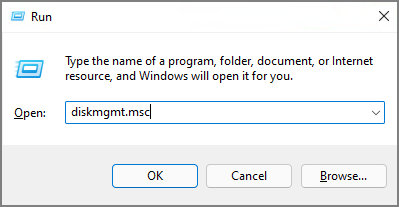How Do I Install APK on Windows 11, Sideload Android Apps Successfully [2023 Guide]
- Complex Level: Medium
- Applies to: Install APK on Windows 11 for both Public and Preview Insider users.
Timeline for Windows 11 Supporting Android Apps:
- 1. On October 21st, 2021, Microsoft introduced Android apps on Windows 11 to Windows Insiders.
- 2. On February 15th, 2022, Windows Subsystem for Android was available for public preview.

At The Beginning:
This page covers everything that you need to know about Windows System for Android that enables Windows 11 devices to install APK and run Android applications available in Amazon Appstore. Both Windows 11 Public and Preview Insider users can all get a full guide here to obtain the latest Windows 11 system and sideload Android apps successfully on their computers.
If you are one of them, follow the respective guide here to install and run Android apps on your computers with respective solutions.
In this article, you'll learn:
- #1. Check If Your Windows 11 PC Meets the System Requirements for Android Apps
- #2. Prepare Windows 11 PC Ready for Installing APK
- #3. How to Install APK on Windows 11 Insider OS
Can I Install APK on Windows 11 and Run Android App
Sure! Since Microsoft announced on October 5th, 2021, it's already a known truth that Windows 11 will support running Android apps soon with an Android Subsystem. However, since then, Windows users have continued asking when and how to install APK on Windows 11.
So for the question of "Can I run Android Apps on Windows 11", the answer is Yes! Here in the following, you'll get everything you need to know about Windows Subsystem for Android App and how to install APK on your Windows 11 computers. So let's get started now.
Which OS Can Install Android APK and Run Android Apps
After the release of the Windows 11 KB5010414 update on February 15th, 2022, it's now a real thing for sideloading and running Android apps as a partnership of Amazon Appstore. Then, it's now a reality that Windows 11 Public users in the U.S. area could get the new update and configure the computer to install APK in Windows 11.
So what about the Windows users outside the United States? The good news is that any Windows 11 Preview Insiders can also download the Windows Subsystem for Android App on their computers.
In a word, regardless you are a Windows 11 Public user in the United States or a Preview Insider around the world, you can all install Windows 11 for Android Apps now.
How to do so? Here is a full guide for you:
- #1. Check If Windows 11 On Your PC Meets The System Requirements for Android Apps
- #2. Prepare Windows 11 PC Ready for Installing APK
- #3. How to Install APK on Windows 11 Insider/Window 11 Public
#1. Check If Your Windows 11 PC Meets the System Requirements for Android Apps
Note that not all computers installed with Windows 11 can get the newest Windows Subsystem for Android App. This new system has some basic requirements on computer hardware, let's see the details.
- RAM: 8 GB or 16 GB (recommended)
- Storage Type: Solid State Drive (SSD)
- Processor: Intel Core i3 8th or above; AMD Ryzen 3000 or above; Qualcomm Snapdragon 8c or above.
- Processor architecture: x64 or ARM64
- Virtual Machine Platform: Virtualization must be enabled on Windows 11
So how do you know if your computer reaches the system requirement specification? Here are the steps that you can follow.
Check if your Windows 11 PC Meets the System Requirements to Install APK:
Step 1. Press Windows + I keys to open Settings.
Step 2. Click on "Systems" and click "About" on the system settings window.
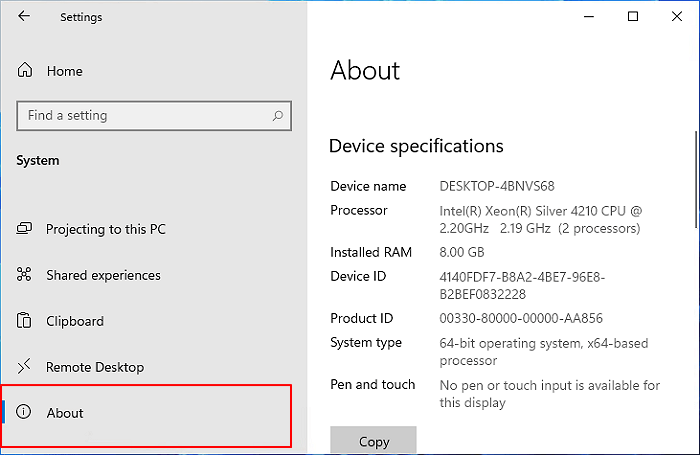
Step 3. Check and confirm if your computer meets the system requirements for installing APK on Windows 11:
- Under the Device specifications section, confirm the RAM and CPU requirements.
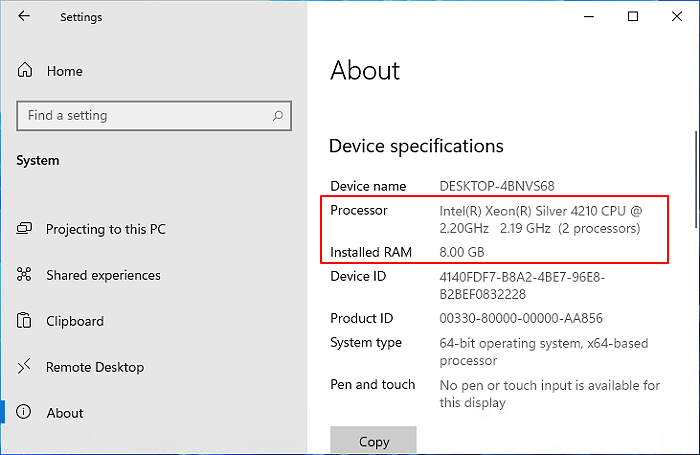
- Under the Windows specifications section, confirm if your Windows 11 is equal to or higher than 22000.257.
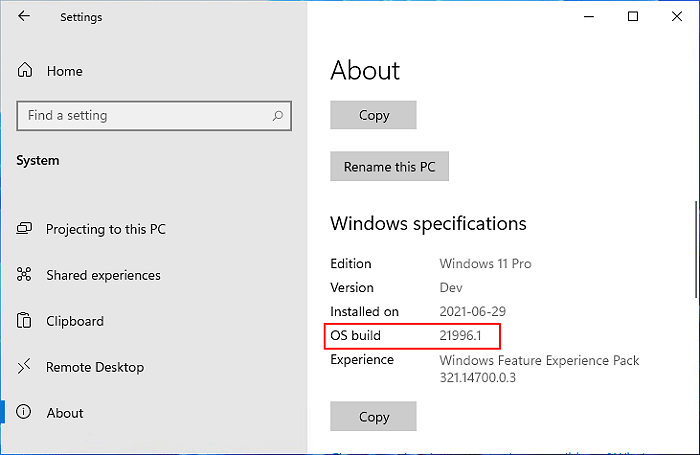
For example, my current OS is an older version and I'll need to update my computer to the newest Windows 11 first.
- Click "System" > "Storage", under the storage management section, click "Advanced storage settings" > "Disks & volumes" settings to see if the media type of main drive is SSD.
If it's HDD, you can't install APK on Windows 11.
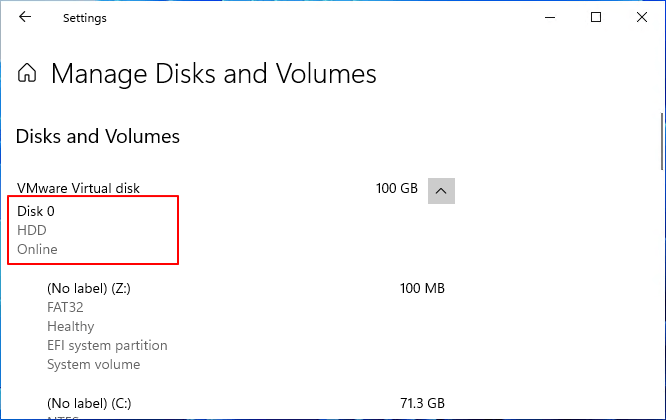
If your computer meets all the requirements, you can directly skip the 2nd part of "Prepare Windows 11 PC Ready" and move to the 3rd or 4th part to install APK on Windows 11.
If your computer doesn't meet all the requirements, follow the 2nd part to configure and get the computer ready for installing and running Android apps.
#2. Prepare Windows 11 PC Ready for Installing APK
Here we'll guide you through configuring and getting Windows 11 PC ready for installing APK Android apps from the following 4 parts: RAM, Storage Type, Processor/Processor architecture, and Virtual Machine.
Let's go.
1. Increase RAM If It's Less Than 8GB
If the RAM on your computer is less than 8GB, you can purchase a new RAM card to extend it to 8GB or 6GB.
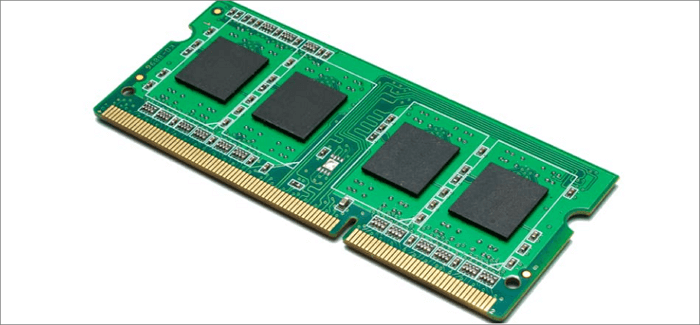
Here is how to do so:
Step 1. Check the RAM storage on your PC:
Right-click on "This PC" > Click "Properties", and next to the "Installed RAM" section, you can view the RAM storage on your PC.
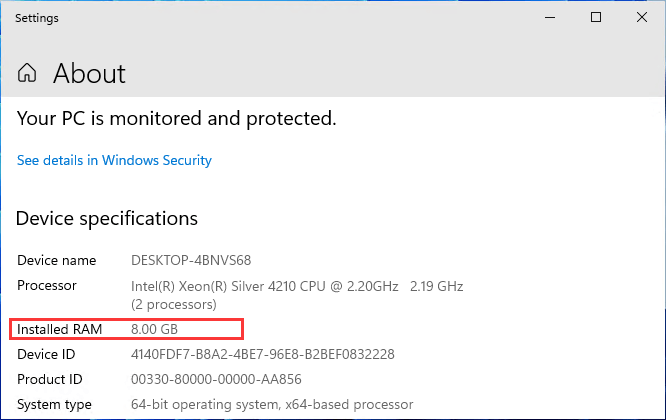
Step 2. Purchase a RAM card for your PC.
Note that the RAM card needs to be the same storage capacity as the original card installed on your PC.
For example: 4GB - 4GB; 8GB - 8GB; 16GB - 16GB; 32GB - 32GB.
If you purchased a 32GB RAM card, but the original card is 16GB, the new memory card performance will be configured to run the same speed as the old card.
Step 3. Install the new RAM card to your PC:
Shut down your PC and open the computer case > Find the RAM card slot, insert and fasten the new RAM card > Close the computer cause and restart the computer.

After this, you need to wait for the computer to boot up, and the system will automatically detect and display the added RAM storage.
2. Migrate Windows 11 from HDD to SSD
When your Windows 11 operating system is installed on a mechanical hard disk drive, the new Subsystem won't install on your PC. This is because the system requires an SSD for installing APK on Windows 11.
To do so, you can transfer and migrate Windows 11 from HDD to a new SSD with the help of reliable partition manager software - Qiling Partition Master.
Here is how to migrate Windows 11 system from HDD to SSD without reinstallation:
1st. Purchase and Install a New SSD to Windows 11
Two tips for selecting and adding a new SSD for Windows 11 OS migration:
- The new SSD must be equal to or better than the used space of the Windows 11 system partition.
- New SSD must be installed or added as an internal disk on your PC.
Here is how to do so:
Step 1. Purchase a new SSD that contains equal or bigger storage capacity than the system drive, for example, 120GB SSD = 120GB C drive, or 256GB, 512GB SSD.

Step 2. Check the new SSD type: a SATA SSD or an M.2/NVMe SSD.
Step 3. Shutdown the computer, open the computer case, install the new SSD:
- If it's a SATA SSD, connect the SSD to the computer via a SATA cable and a power cable.

- If it's an M.2 or NVMe SSD, find the SSD slot, slide in the SSD disk, and fasten it.

Step 3. Once done, reboot your computer.
2nd. Initialize New SSD on Windows 11
To make the new SSD readable on Windows 11, you need first to initialize this disk to share the same disk type as your current OS drive. Here is how to do so:
Step 1. Press Windows + R keys, type diskmgmt.msc in the opened Run dialog and click "OK" to open disk management.
Step 2. Right-click the OS disk, select "Properties", go to the Volumes tab, and check the partition style.
Step 3. Right-click on the SSD and select "Initialize Disk", then select "GPT" as the type.
(Windows 11 requires GPT as boot disk type as it needs UEFI and Secure Boot modes.)

3rd. Migrate Windows 11 to SSD Without Reinstallation
Once you set up the SSD, you are now good to transfer Windows 11 to SSD with the help of OS migration software like Qiling Partition Master.
Note: The operation of migrating OS to SSD or HDD will delete and remove existing partitions and data on your target disk when there is not enough unallocated space on the target disk. If you saved important data there, back up them to an external hard drive in advance.
Step 1. Select "Tools and utilities" page. Select the "System clone" and click "Next" to continue..

Step 2. Select the target disk you want to clone. Click "Next".
Step 3. Click "Yes" after checking the warning message. The data and partitions on the target disk will be deleted. Make sure that you've backed up important data in advance. If not, do it now.

Step 4. Preview the layout of your target disk. You can also click the disk layout options to customize the layout of your target disk as you want. Then click "Start" to start migrating your OS to a new disk

3. Upgrade Processor/Processor Architecture
Note that if your computer processor or processor architecture is older Intel Core i3 8th, AMD Ryzen 3000, Qualcomm Snapdragon 8c, etc., you have two ways to go:
- Option 1. Manually replace and upgrade the CPU processor on your own.
Here is a checklist of Windows 11 supported Processors: https://docs.microsoft.com/en-us/windows-hardware/design/minimum/supported/windows-11-supported-intel-processors
See details for upgrading CPU.
- Option 2. Replace your old computer with a newer one.
For nun-geek users, we don't recommend you try to replace the CPU processor as it's easy to get your computer broken. However, if you have no technical skills, replacing the Old PC with a new computer is much easier.
Also, if your computer is 32bit, you'll need to replace the computer with a 64bit for installing APK files on Windows 11.
4. Enable Virtualization on Windows 11
To emulate the Subsystem for Andriod on Windows 11, you'll need to enable virtualization on your PC to access a larger library of apps like APK apps to use and install.
Here is how to do so:
First. Enger BIOS Settings
- Press Windows + S, type settings in the search box, and open Settings.
- Click "Windows Update" on the left pane, then select "Advanced options".

- Click "Recovery" > Select "Restart now" next to the Advanced startup section.
- Click "Troubleshoot" > "Advanced Options" > "UEFI Firmware Settings".

- Click "Restart" on the UEFI Fireware Settings window so to enter BIOS settings.

Second. Enable Virtualization in BIOS
Here we'll show you how to enable Virtualization in Intel and AMD CPUs. Let's see the details:
Enable Virtulization for Intel CPU:
- On BIOS settings, press F7 or click "Advanced Mode".
- Click "Advanced" > Select "CPU configuration".

- Click "Intel Virtualization Technology", select "Enabled".
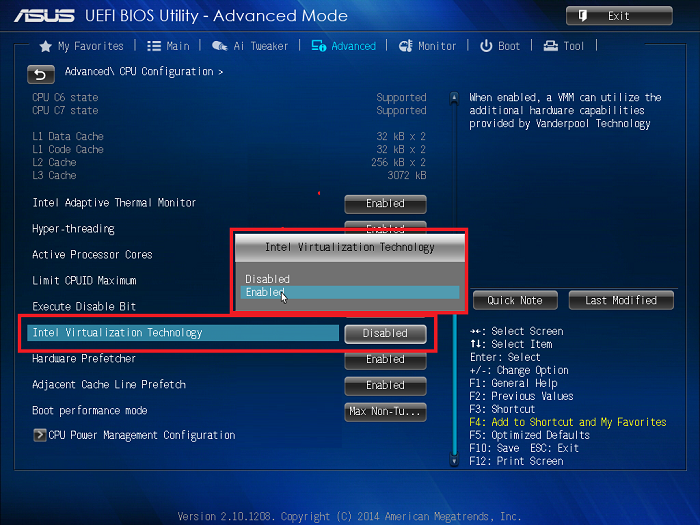
- Press F10 to save and exit, or click "Exit" and save changes.
Enable Virtualization for AMD CPU:
- On BIOS settings, press F7 or click "Advanced Mode".
- Click "Advanced" > "CPU Configuration".
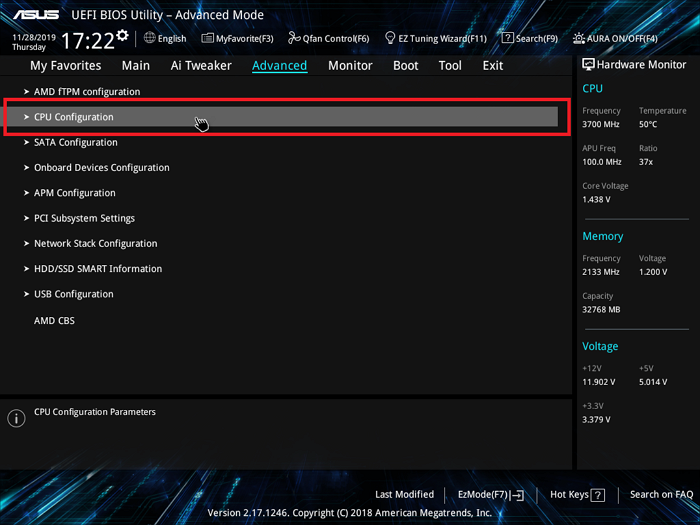
- Select "SVM Mode" and click "Enabled".
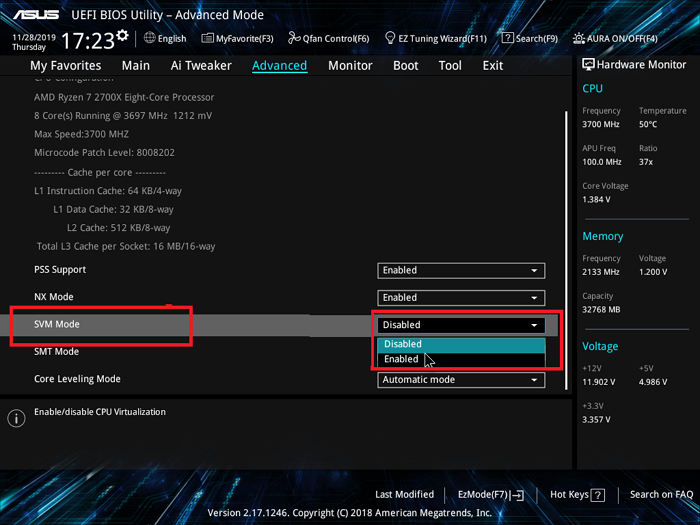
- Click "Exit" and click "OK" to save the changes and restart the computer.
After this, you can now move to the next part to install Android APK on Windows 11. As the ways to install APK on Windows 11 are different, we suggest you first confirm your current running version of Windows 11 and then follow the right guide to get the desired APK application installed on your PC.
#3. How to Install APK on Windows 11 Insider OS
For Windows Insiders, you need first make sure that you've updated Windows 11 to the latest version with the following steps:
Open Settings > Click on "Windows Update" > Click on "Check for updates".

Wait for the process to complete and then restart the computer to install the new updates.
First. Check for Microsoft Store Update
It's also important that both Insider and Public users update the Microsoft Store so as to install APK apps on Windows 11. Here is how to do so:
Step 1. Open Microsoft Store, click "Library," and click "Get updates".
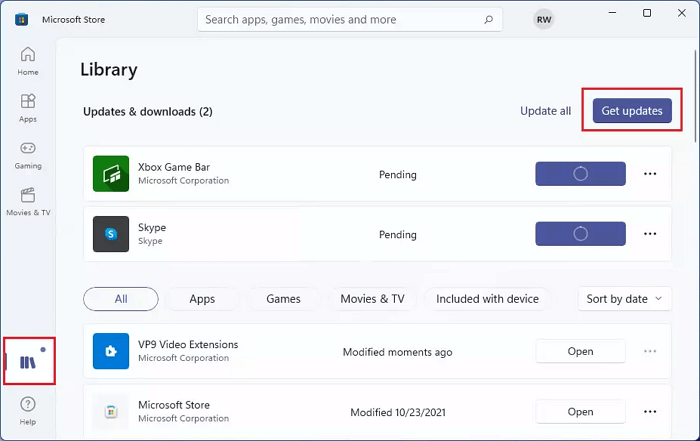
Step 2. Click the Profile menu, select "App settings", then confirm if Microsoft Store is with 22110.1402.6.0 or even higher version.
If not, upgrade the Microsoft Store app to the new version.
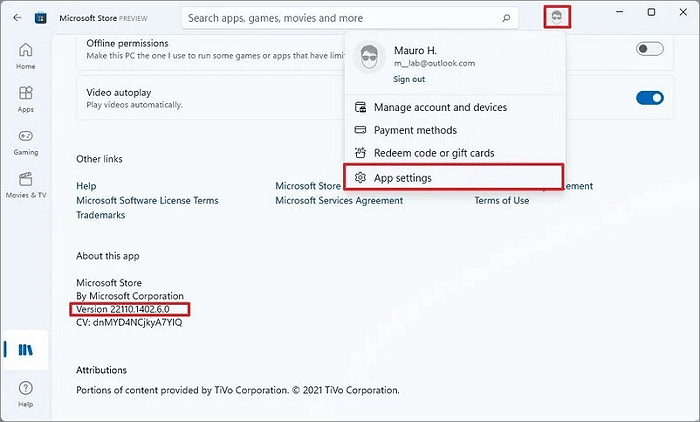
Second. Install Windows Subsystem for Android with Amazon App Store on Windows 11
Step 1. Open Microsoft Store app, search "Windows Subsystem for Android," and click "Get".
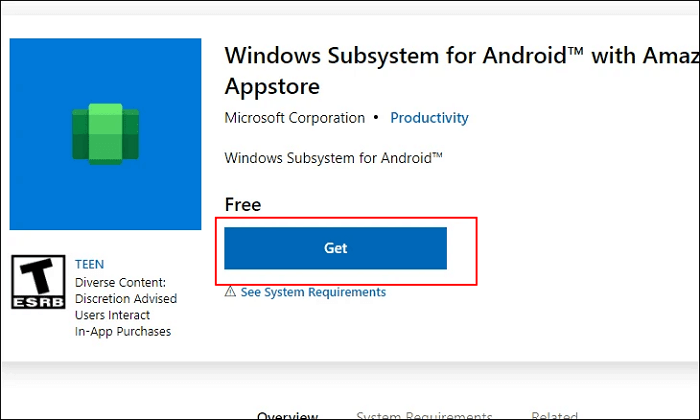
Step 2. Click "Get" or "Install" on the Microsoft Store app.
Wait for the process to complete.
Step 3. Search to open Amazon Appstore in Microsoft Store, click "Install".

Step 4. Click "Set up" and click "Download" > "Next" > "Restart".

After this, you are now good to go and install Android APK applications on your Windows 11 computers.
Last. Install Android Apps on Windows 11 from Amazon Appstore
Step 1. Open the start menu on Windows 11, and click "All apps".

Step 2. Sign in with your Amazon account, and then you are good to select and install Android applications by clicking "Get".
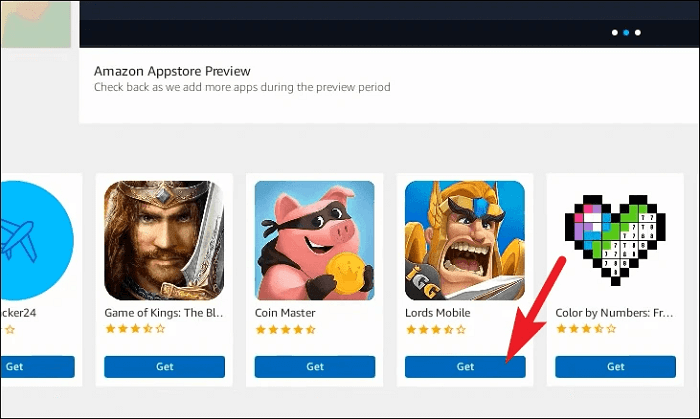
Bonus Tip: How to Install APK on Windows 11 to Sideload Android Apps
Alongside Amazon Appstore, you can also sideload apps on Windows 11 via the APK files. Here is how to do so:
Step 1. Go to Android developer website: https://developer.android.com/studio/releases/platform-tools
Step 2. Go to the Downloads section and click "Download SDK Platform-Tools for Windows".
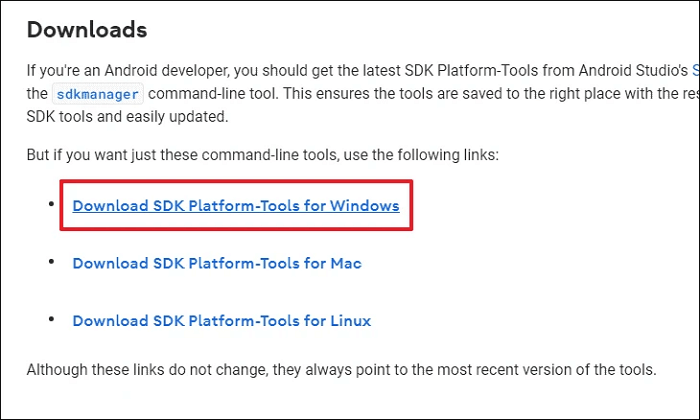
Step 3. Check "I have read and agree with the above terms and conditions", and click "Download Android ADK Platform-Tools for Windows".
Step 4. Once done, go to the download directory, right-click the zipped folder, and select "Extract All".

Step 5. Once the zipped folder opens, download and copy to save the APK file for a desired app to the folder.
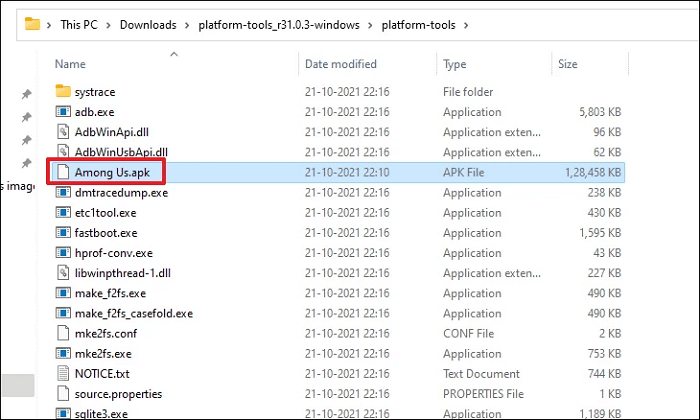
Step 6. Open Windows Subsystem for Android on Windows 11 from the menu bar, enable the Developer mode on WSA window: switch to On size.
Step 7. Open Command Prompt, type the following command lines, and hit Enter each time:
- adb.exe connect ip address
- adb.exe install file name.apk

Wait for the process to complete. This will help to install the APK file on Windows 11.
Once done, you can now go to the App section on the start menu to view and use the sideloaded Android apps on Windows 11.
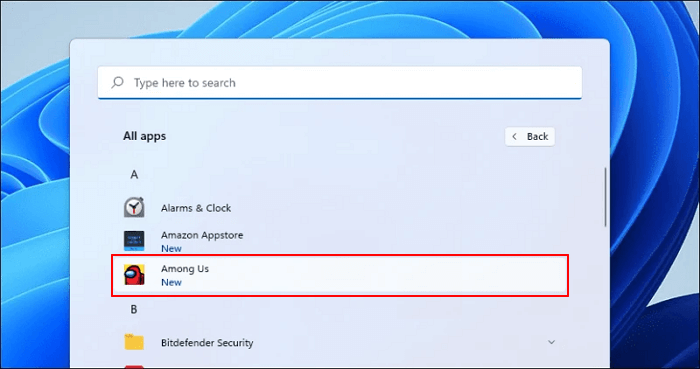
Conclusion
On this page, we introduced some key points to make sure you can install Android APK or apps on Windows 11 successfully. To make it simple, check and confirm that you follow the guidelines one by one:
- You are the latest new Windows 11 Public or Insider user of 22000.527 or higher.
- Your computer meets Windows 11 requirements for installing Android apps: 8GB or more RAM, SSD OS disk, enable virtualization, processor, and update processor architecture.
If you are unsure if your computer meets the requirements or don't know what to do, relax, and you can revert to the #2 part to get Windows 11 ready for this.
For the complete process of installing Android apps on Windows 11, go to the #3 part and get a complete guide. I hope this page indeed works for you.
Related Articles
- [New] How to Add Unallocated Space to C Drive in Windows 11/10
- 2022 Tutorial: How to Resize C Drive in Windows 10/8/7
- The Local Device Name Is Already in Use
- Unable to Change Letter or Assign Drive Letter to D/E/F/G
